Hidden Potentials.
I will investigate forgotten and new knowledge through the actions of further material explorations.
There is a lot of knowledge shared, yet a lot of knowledge forgotten. A lot of knowledge has been proven, a lot of knowledge has been held back. How can the forgotten, the hidden, the restrained knowledge become accessible to society again?
In my previous action, I have been referring to a very old book by German scientist Leonhard Fuchs, finalized in the year 1543. Here, knowledge about common plants is shared – plants that are still in our environment when we look closer. Some of its knowledge had been carried into pharmacy, some of it just vanished. Most of it is no longer carried from one generation to another – it disappears like the plants itself.
The synergy with the plant world has reduced for many societies. But what’s left is the interaction with plants in the kitchen. Mostly because of taste we use herbs to refine our recipes. What would a Saltimbocca be without its sage? A pesto without its basil? But which other hidden potentials lie behind these plants?
Ancient knowledge being discovered once more with a new way of interaction.
placing sage in a new context.
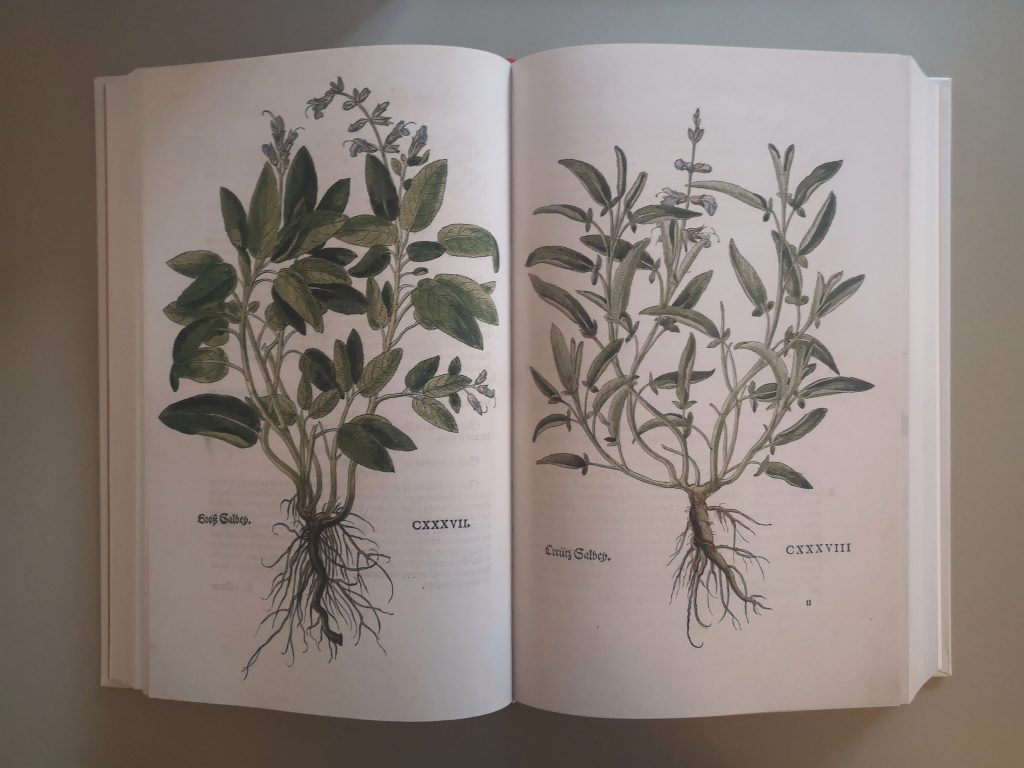
The medicinal plant sage helps with digestive problems, Alzheimer’s disease and menopausal complaints. Externally, sage is used for gum and throat inflammation. Sage leaves, prepared as tea for gargling, have an anti-inflammatory effect on mouth and throat diseases. The leaves are narrow, stalked, finely wrinkled, grey-felted and overwintering. Sage leaves are used fresh or dried as a spice for meat dishes. Due to its antioxidant and antimicrobial properties, sage has a preservative effect and prevents fats from becoming rancid.
Translated from http://homoeopathie-naturheilkunde.vitanet.de/heilpflanzenlexikon/salbei
We have a lot of ancient monasteries in Germany, we would visit as children. Sometimes there were some plays for children, sometimes there were some events were monks would explain how people lived in medieval times. One memory that I would never forget, was hearing monks talking about the medical herbs garden and how sage was used as the very first tooth brush. The sage leaves having this rough but still soft surface, would become handy for rubbing the teeth clean.

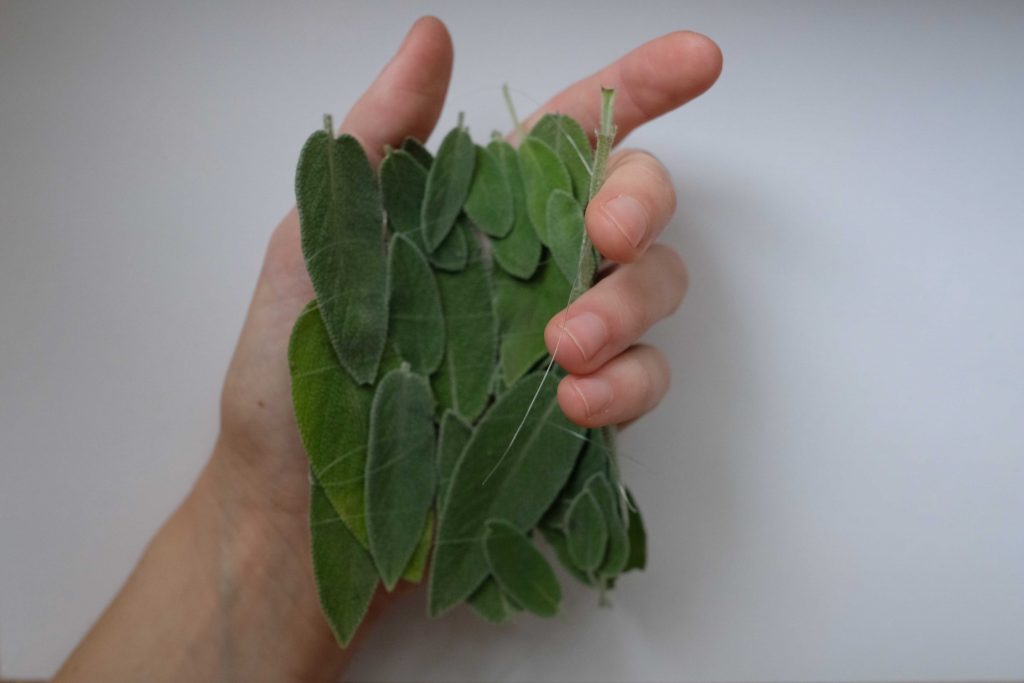
Exploring the leaves’ surface :
The leaves are fascinating. They resemble soft textile, yet they are rough and in a way durable. I started off by weaving (very low-tech weaving) the leaves to receive some sort of surface I could explore. Reflecting on my senses, I noticed how the smell was present when focussing on exploring the leaves with my hands.
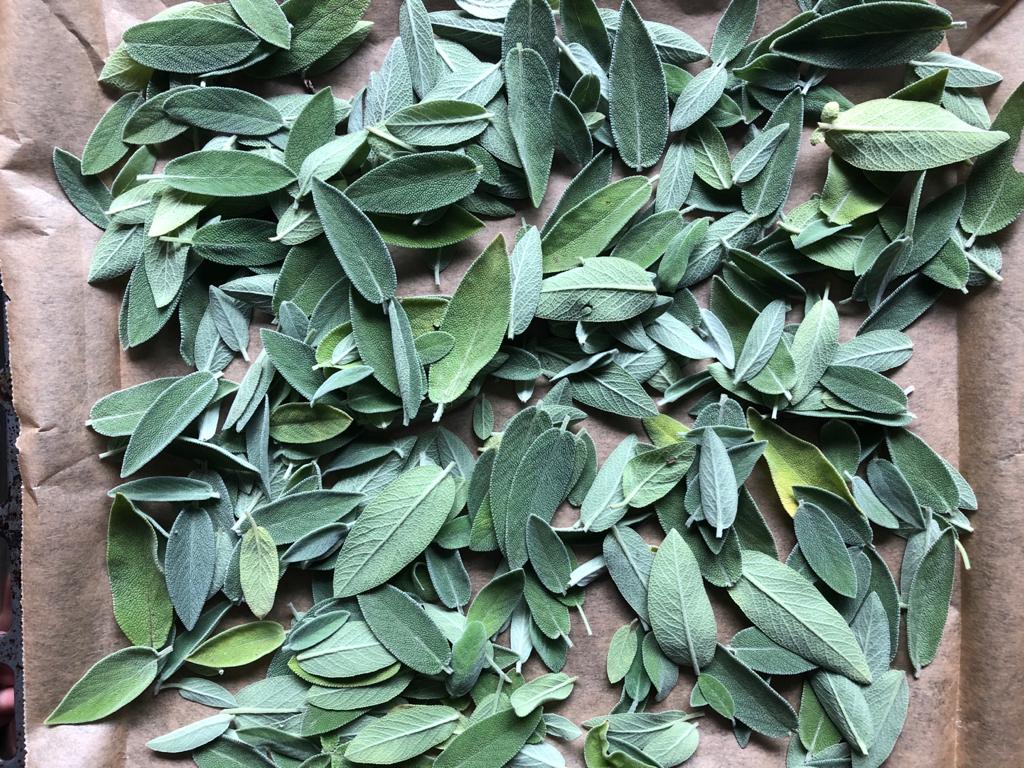
Exploring the smell of sage:
I dried the leaves in the oven with low heat to explore its smell. To be honest: I noticed how I pretty soon could no longer bear the smell anymore. Many people will surely love the smell – for me (and my family who started complaining very soon) it was just too intense! Still, I wanted to continue and see what I could explore when “making” with the sage leaves.

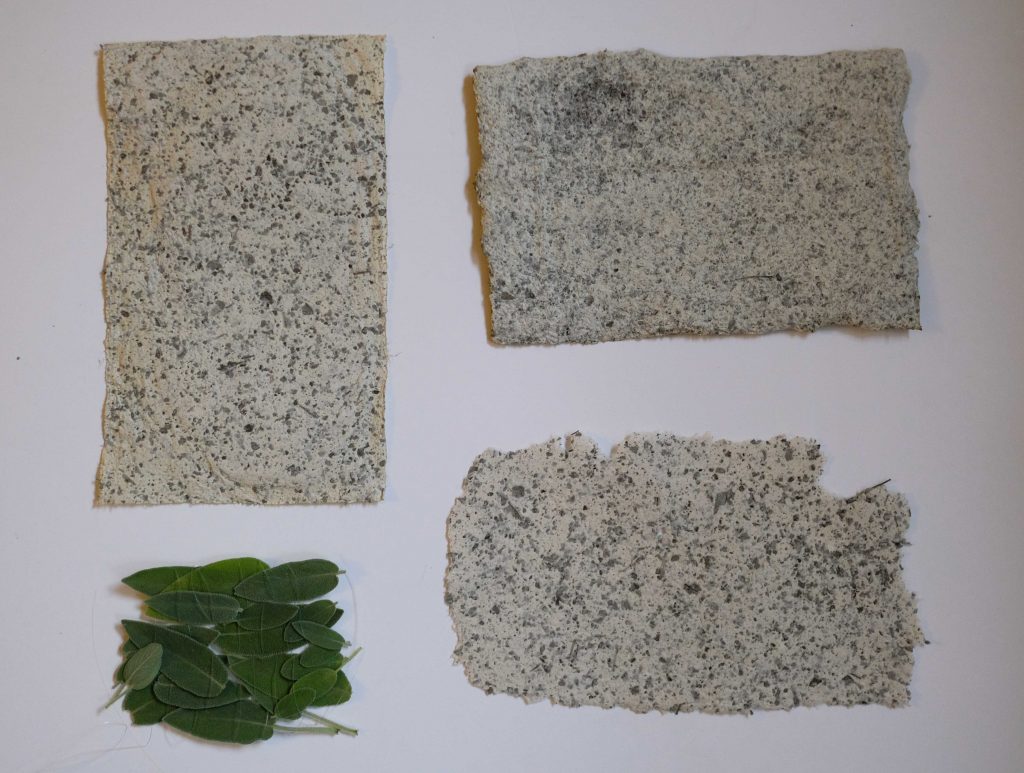
Exploring making with sage:
I dried two trays of sage and shredded the leaves until I had a fine powder. Amazingly this powder looked very much like textile fiber dust and was super soft and light. It looked beautiful but I noticed that this would not become any base for paper making, as it turned out so fragile and light. I decided to add some old paper shred and started paper making. I tried thicker pieces and thinner pieces. All the sheets still smell like sage (as does our oven). Incredible how the smell would stay and the soft and rough surface that can be found when looking at the leaves, can still be detected in the paper.

One shot before it started burning ! I tried to place the paper above a candle to investigate if the smell of burned sage would evolve that way, too. Well, let me say it did!
It was a fun action and I do not feel like this action is done yet. I will continue in this direction with action 7 – this time I will luckily choose a smell I will still enjoy in the end.
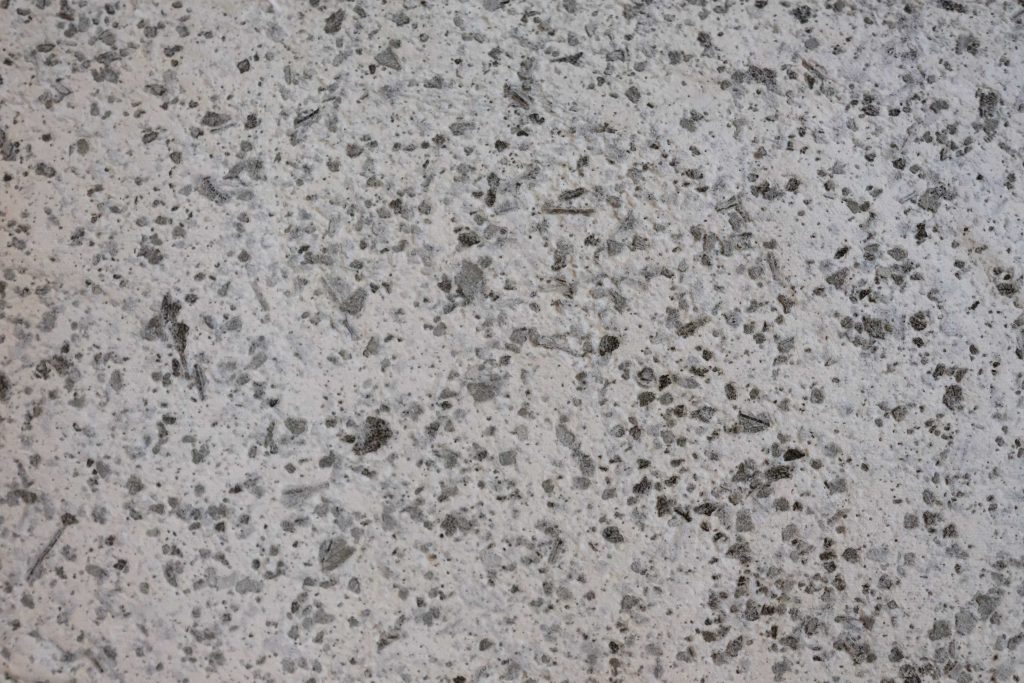
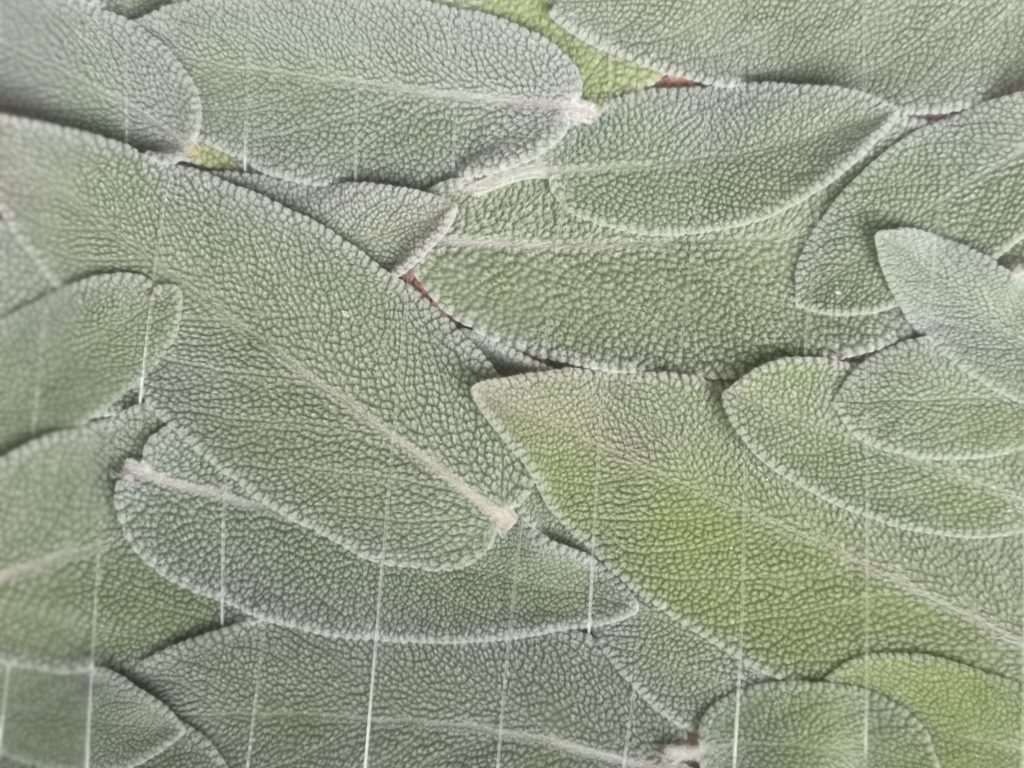

I loved this Investigation,
-Have you explored the traditional Indian science of Ayurveda? Maybe it will add a layer to your exploration.
– There is another way to make paper, is by adding shredded fabric instead of paper ts called “khadi” I have uploaded some pictures of the process in action 3&4 in my blog. Maybe you might find it interesting.
– I can’t imagine what burning sage would smell like !!! Must be good!!! I am getting so many ideas for integrating it into products.
– I never knew the traditional usage of sage.
– Could your paper have antibacterial properties?
Thank you Charles! I looked up the Khadi Paper and it looks amazing! I will try to work in that direction as well now, thank you so much for the tip 🙂 I have thought of the antibacterial properties before and will search for other ancient pieces of knowledge about Sage – I bet there are so many hidden potentials once again!